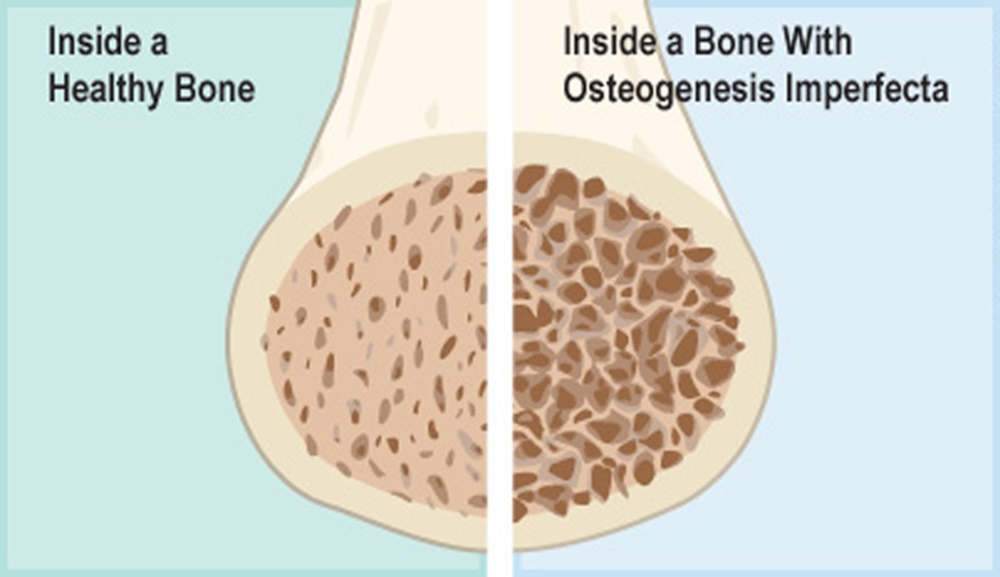
The phrase osteogenesis imperfecta may look like a mouthful, but there’s a chance you may be familiar with this condition under a different name.
Osteogenesis imperfecta (OI) is commonly known as brittle bone disease: a genetic condition that prevents adequate production of collagen, resulting in under-developed bones that are naturally more susceptible to fractures.
According to the Osteogenesis Imperfecta Foundation, osteoporosis is an almost universal consequence of this (learn about osteoporosis here). Sadly, it’s not the only possible consequence that people with OI sometimes have to deal with.
The relationship between osteogenesis imperfecta and scoliosis
While the likelihood of being diagnosed with both osteogenesis imperfecta and scoliosis is extremely rare (0.1 in a million), it’s far from an impossibility. In fact, many within the medical community theorise that there is a relationship between the two conditions.
It’s believed by some medical professionals that OI can actively contribute to the development of scoliosis. As such, the chances of developing scoliosis are, in theory, likely to increase marginally if you already have OI.
Scientific studies on OI and scoliosis
Findings presented by James J. McCarthy at the American Academy of Orthopaedic Surgeons’ 74th Annual Meeting in 2007 appeared to confirm this theory. The study focused on childhood OI in particular, and was carried out retroactively.
Of the 288 osteogenesis imperfecta patients studied, 83 were later diagnosed with scoliosis. This represented a 28.8% incidence of scoliosis in existing OI sufferers. What’s more, those who underwent corrective surgery for their scoliosis had a high rate of complication.
Meanwhile, a further study published in the Journal of the American Academy of Orthopaedic Surgeons in 2017 noted that, while scoliosis is rarely discovered in OI patients under six years old, it can progress rapidly thereafter.
The journal went on to note that the most common type of scoliosis curve found in OI sufferers was a single thoracic curve (present in 97% of scoliosis patients with type I OI). Meanwhile, 58% of scoliosis patients with type III OI had curves in the thoracic region.

Treating scoliosis patients with osteogenesis imperfecta
Due to the fragility of OI patients’ bones, scoliosis treatment can be tricky. Manoeuvrability may be limited, and stress placed on the bones could prove to be dangerous.
What’s more, younger patients may also exhibit confidence issues and lack of trust in treatment providers, particularly if they have suffered multiple bone fractures in the past.
Here at the Scoliosis SOS Clinic, our aim is to provide safe and effective non-surgical treatment for people with scoliosis. For those who also suffer from osteogenesis imperfecta, our ScolioGold programme is a fantastic way of treating the symptoms of scoliosis without aggravating the symptoms of OI.
From muscular imbalance and trunk rotation to breathing and posture improvement, our specialist treatment courses (led by trained professionals) can be truly life-changing for those who have both OI and scoliosis. The treatment can even be modified to involve fun, interactive exercises for younger patients.
Treatment Course Information Book an Initial Consultation
